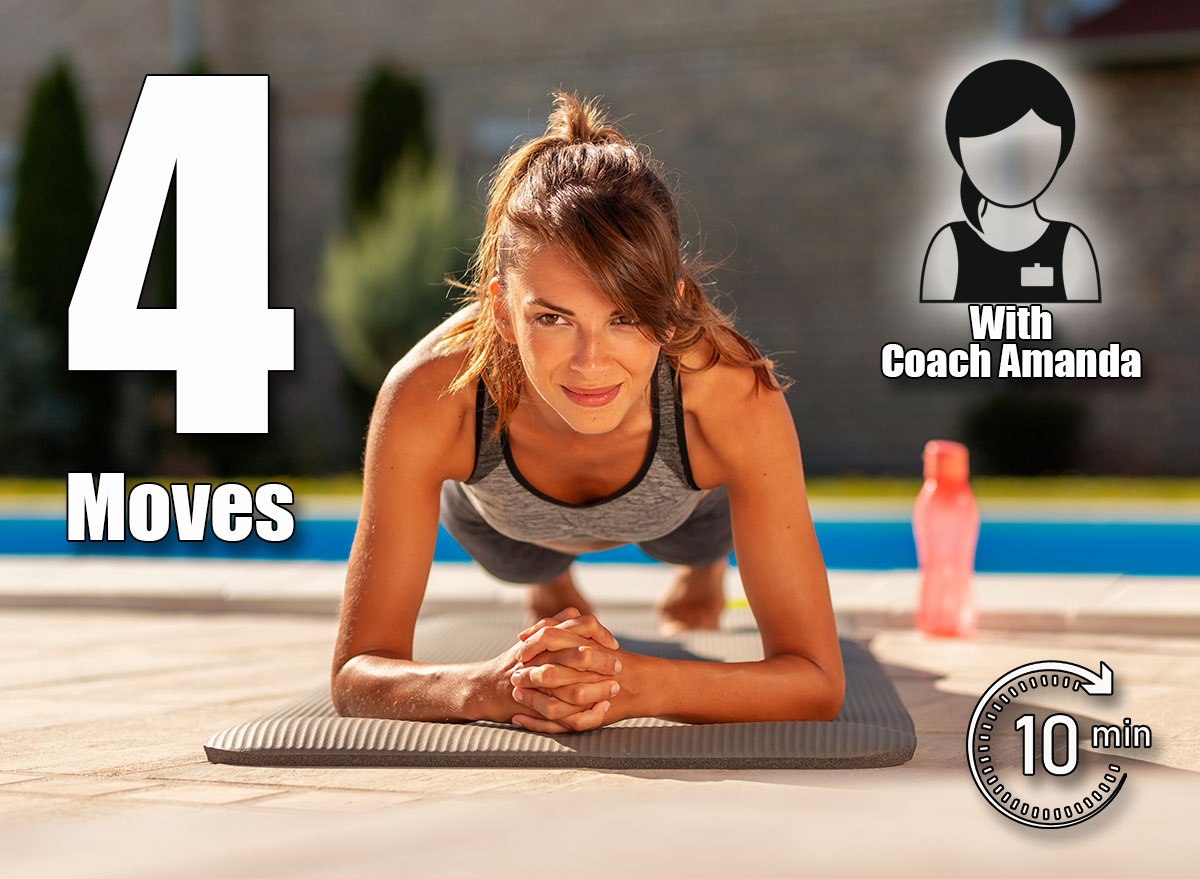4 Bodyweight Exercises That Make You Stronger Than Most 30-Year-Olds After 50

After you turn 50, building and maintaining muscle mass and functional fitness becomes a non-negotiable aspect of healthy aging. Natural muscle loss, known as sarcopenia, begins in your 30s and can speed up over time, impacting your balance, mobility, and metabolism. Fortunately, we have some good news: You can slow down (and even reverse) much of that decline with the right kind of training—specifically, bodyweight training.
To find out which bodyweight exercises are ideal for boosting strength in your 50s, we spoke with Amanda Dvorak, CPT, a certified personal trainer at Garage Gym Reviews, who reveals her top five bodyweight exercises that can help those in their 50s outperform many 30-year-olds in terms of functional fitness. “If you can knock out clean reps with a full range of motion, you’re ahead of most,” says Dvorak.
Bodyweight exercises are one of the simplest, most effective ways to build and maintain strength at any age. They require no equipment, can be done anywhere, and often work multiple muscle groups at once, giving you more return on your time investment. Research shows that bodyweight training can produce similar improvements in strength and muscle endurance as weightlifting for many populations, especially when done with proper form and consistency.
The following moves are designed to help build full-body strength, including your chest, shoulders, arms, legs, glutes, and core strength, all while improving posture and joint health. Read on for the exercises and detailed how-tos. Then, when you’re done, be sure to check out The Best Move To Burn More Belly Fat Than Running After 50.
4 Bodyweight Moves That Build Strength After 50
Pushups
Pushups are a total upper-body strength builder that works your chest, arms, and triceps. However, what’s lesser known is that they also engage your core and stabilizing muscles, which over time can improve upper body endurance, functional pushing strength, and postural control.
How to do it:
- Get in a high plank position with your hands slightly wider than shoulder-width apart.
- Engage your core and keep your body in a straight line.
- Bend your elbows to lower your chest toward the floor while keeping elbows at a 45-degree angle to your torso.
- Press through your palms to return to the starting position.
Sets & Reps: 3 sets of 10 to 12 reps. Rest for 60 to 90 seconds between sets.
Modification: If regular push-ups are too challenging, you can do them from your knees or with your hands elevated on a bench.
Squats
Squats are the ultimate foundation exercise for building lower-body strength. Plus, studies show that squats train the muscles you use for walking, climbing stairs, and getting up from a seated position. “Bodyweight squats hit your glutes, quads, and hamstrings, which are the muscles that power movement and protect your joints,” says Dvorak.
How to do it:
- Stand with your feet shoulder-width apart and toes slightly pointed out.
- Keep your chest upright and your core tight.
- Push your hips back and bend your knees, lowering until your thighs are parallel to the floor (or as low as comfortable. If you feel any pain, stop immediately).
- Drive through your heels to return to a standing position.
Sets & Reps: 3 sets of 15 reps. Rest for 60 to 90 seconds between sets.
Progression: For extra resistance, hold a dumbbell or kettlebell at your chest.
Glute Bridges
“These target the glutes and lower back, which tend to weaken with age and sitting,” explains Dvorak. Glutes strengthen your posterior chain (backside), which supports better posture, reduces lower back pain, and improves performance in walking, running, and lifting.
How to do it:
- Lie on your back with your knees bent and feet flat at roughly hip-width apart.
- Press through your heels to lift your hips toward the ceiling.
- Squeeze your glutes at the top and hold for one to two seconds.
- Lower your hips slowly to the starting position.
Sets & Reps: 3 sets of 12 to 15 reps. Rest for 60 to 90 seconds between sets.
Tip: Avoid arching your lower back and keep the movement controlled the entire time.
Forearm Plank
The classic forearm plank is an isometric exercise that engages your core, back, shoulders, and glutes. “This simple hold forces your entire body to work as one unit,” explains Dvorak. “It trains the deep core muscles and strengthens your shoulders and back.”
How to do it:
- Lie face down, then place your forearms on the ground with elbows under your shoulders.
- Lift your body off the ground, supporting yourself on forearms and toes.
- Engage your core and glutes to keep your body in a straight line.
- Hold for the recommended time without letting your hips sag or rise.
Sets & Time: Work up to 60 seconds per set. Rest for one minute between sets.
Modification: Keep your knees on the ground if regular planks are too difficult.
The Bottom Line
These four exercises work best when performed as part of a short, high-intensity routine performed two to three times per week. Here’s one way to structure them:
- Pushups: 3 sets of 10 to 12 reps.
- Squats: 3 sets of 15 reps.
- Glute Bridges: 3 sets of 12–15 reps.
- Forearm Plank: 3 sets, up to 60 seconds each.
- Rest for 60 to 90 seconds between exercises.
As you get stronger, increase the intensity by adding more reps to each exercise, increasing your plank time, or reducing the rest time between sets. Doing these while being consistent will help ensure you stay strong, healthy, and active for decades to come.
Looking for more easy ways to lose fat? Here’s How Long Your Walking Workout Should Be To Shrink Belly Fat.